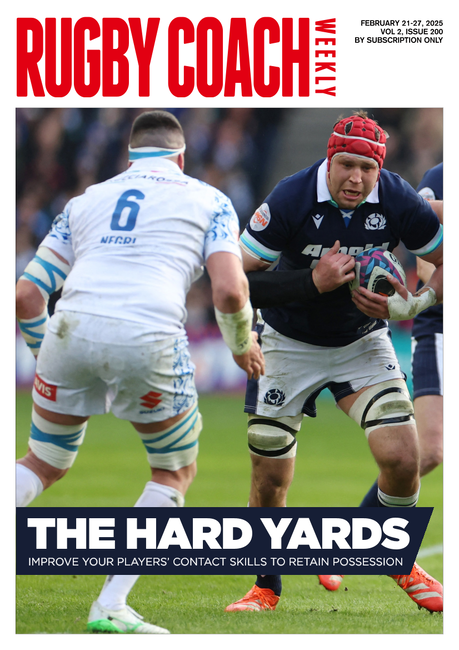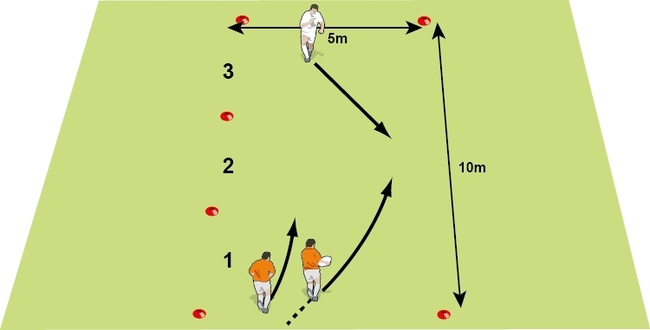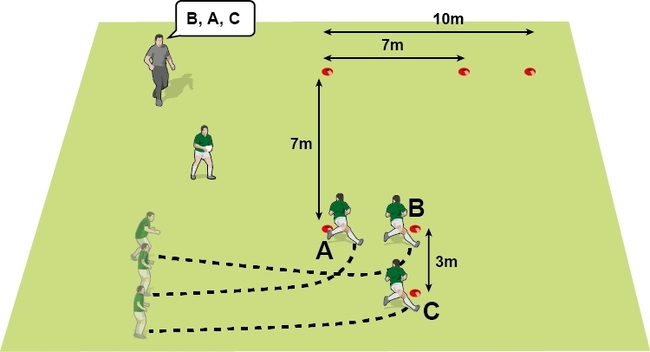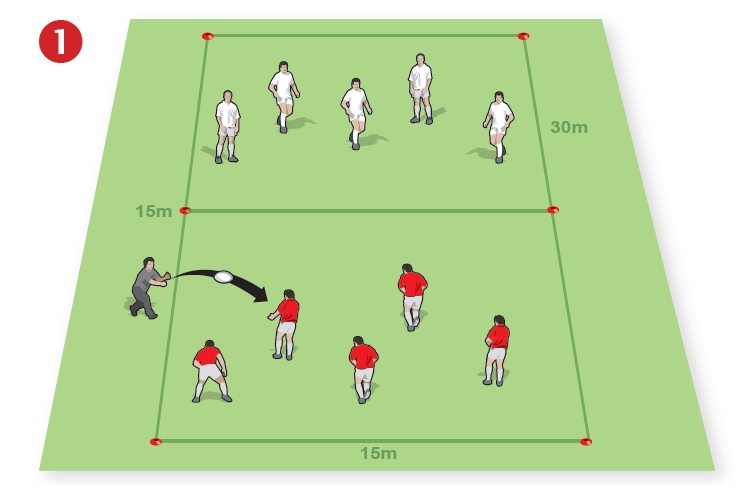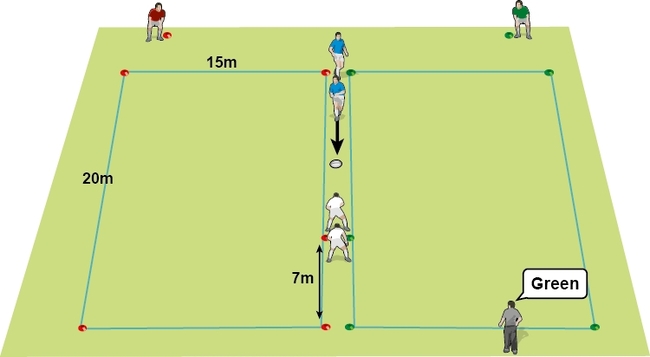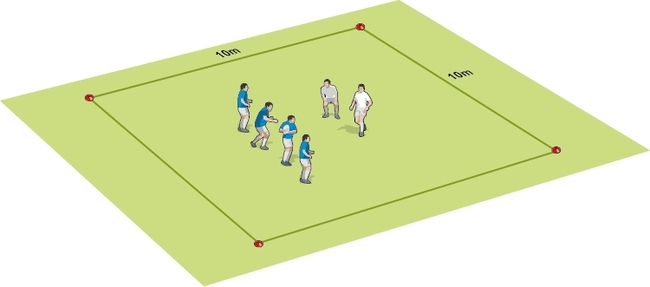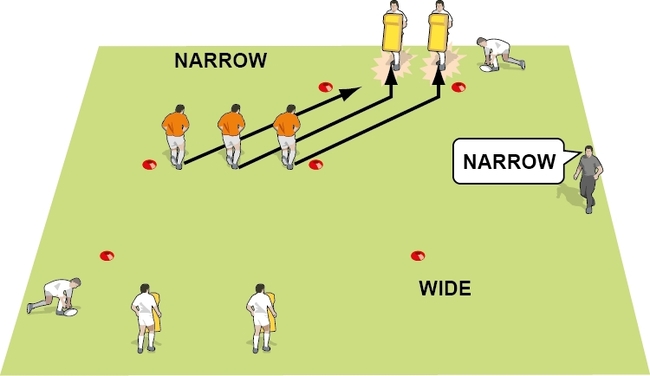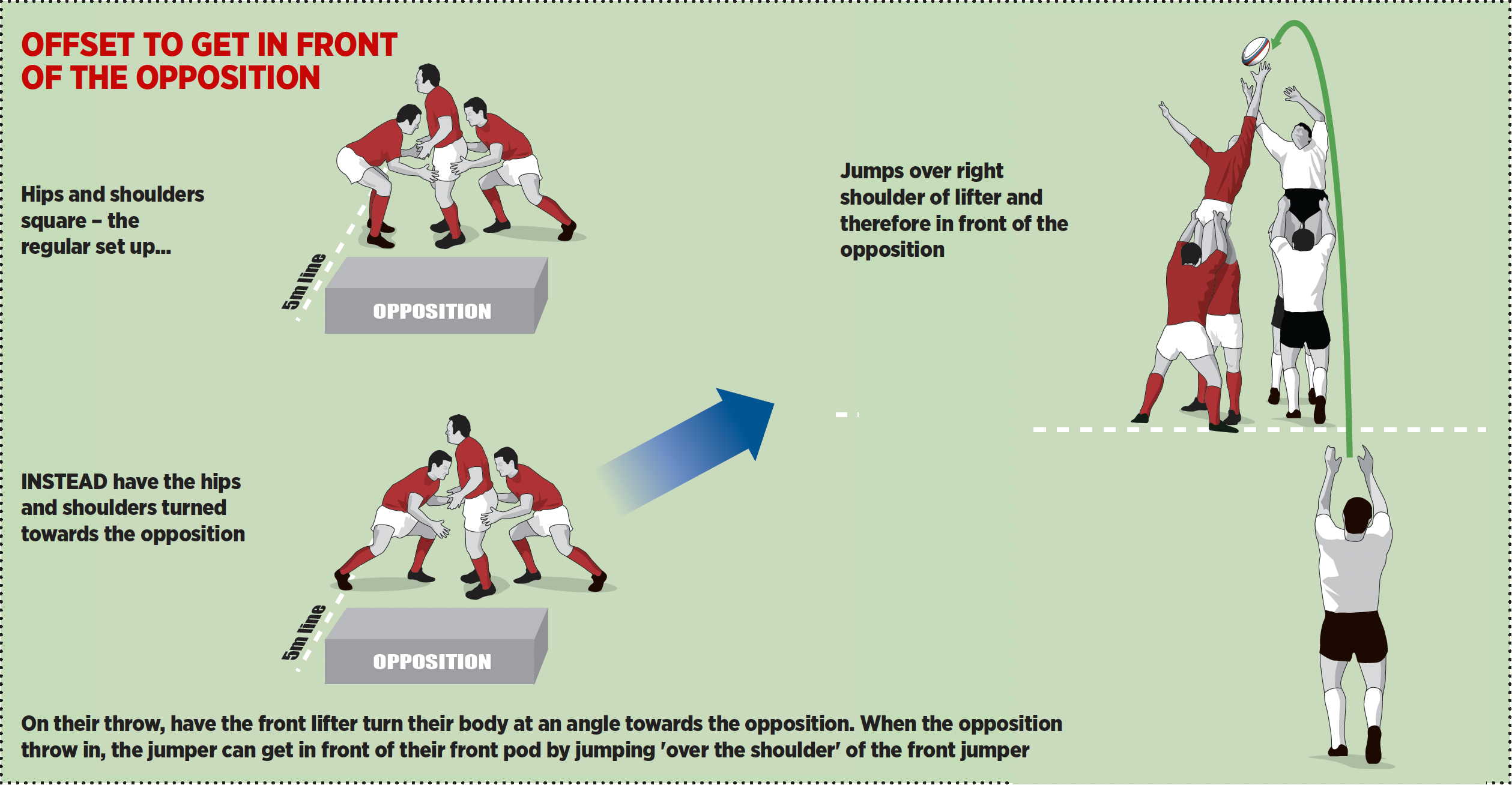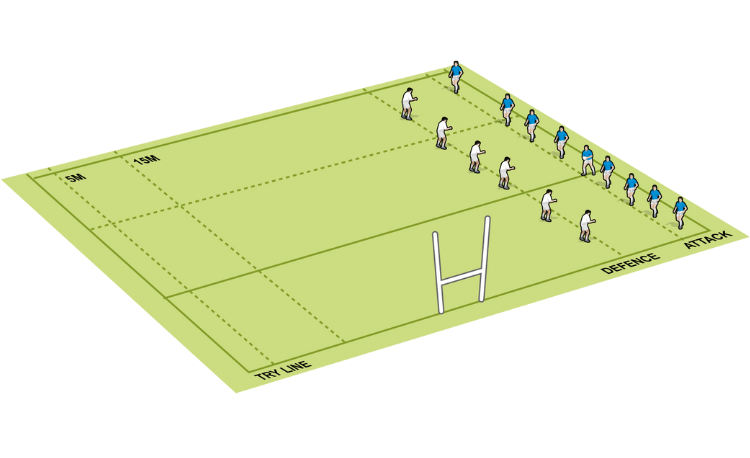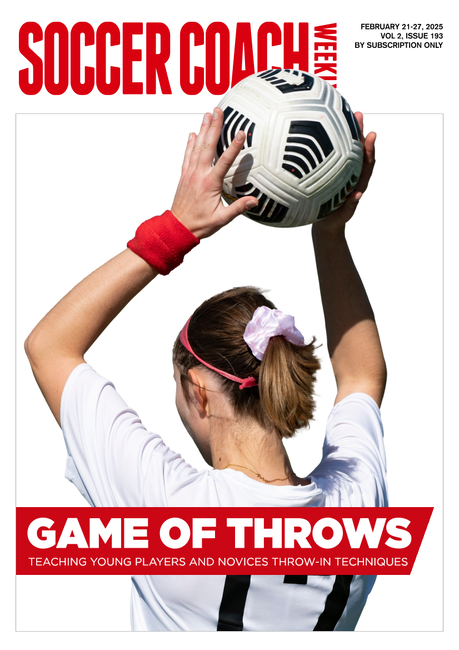Rugby coaching tips to help players execute 2v1s
Real game situations
First we need to identify the most likely 2v1 situations in a game and put them into rugby drills. The key is then to always have a try line or target line. This makes the players compete to score and adds pressure.
Some 2v1 situations benefit from a feeder to start the situation off. If you feed the ball, you can condition some of the play. However, it can make it more difficult to observe the outcomes.
Game situation 1: Scoring tries
Close to the try line, most 2v1s are generated from static rucks. The defender is on the try line and the attackers have little depth. The defender will be committed to tackling the ball carrier, but will also be attempting to get in between the two players.
Game situation 2: Breaking the line
Good footwork or the insertion of a player into the line can create a 2v1 against a flat line of defenders. The ball carrier runs at the gap between two defenders, drawing in his marker and another defender covering across.
The pass is likely to be short and the receiver will need to pick his angle more precisely. Apart from running plenty of 2v2s, try using the footwork drill set out in the second picture below.
Another way to set up a 2v2 to replicate the game is to start the defenders and attackers in an offset position, so the defenders have to slide across to cover the attackers.
Game situation 3: Slow v quick
Two slower attackers can take out a quicker defender by forcing the defender to make a tackle. Condition your rugby drills so that a back is defending against two forwards. Or one back is the ball carrier, one is a defender and a forward is the receiver.
Game situation 4: Running into space
Sometimes an attacker arcs into space, with a defender chasing across to cover. The ball carrier now has to make some decisions on whether to straighten to fix the defender, or look to switch with a team mate.
Game situation 5: Recovering kicks
When the ball is kicked long, the retrieving players may find themselves facing one chaser. The difficulties are often that the retrieving team are turning and might not have much depth.
You can replicate this problem quite simply by throwing a ball behind two players and releasing a chasing player after a short period of time.
Making it more game-specific, it is good to use the types of players who would be involved. So depending on your game plans, the chaser could be a winger or a centre and the retrievers the back three, 10 and a ball-running back row player.

To hear the skills, tactics, strategies and techniques being used at the top of the senior game, worldwide, click the link and subscribe to International Rugby Coaching.
Click the link for a 2v1 continuous rugby drill.
Newsletter Sign Up
Coaches Testimonials

Gerald Kearney, Downtown Las Vegas Soccer Club

Paul Butler, Florida, USA

Rick Shields, Springboro, USA

Tony Green, Pierrefonds Titans, Quebec, Canada
Subscribe Today
Be a more effective, more successful rugby coach
In a recent survey 89% of subscribers said Rugby Coach Weekly makes them more confident, 91% said Rugby Coach Weekly makes them a more effective coach and 93% said Rugby Coach Weekly makes them more inspired.
Get Weekly Inspiration
All the latest techniques and approaches
Rugby Coach Weekly offers proven and easy to use rugby drills, coaching sessions, practice plans, small-sided games, warm-ups, training tips and advice.
We've been at the cutting edge of rugby coaching since we launched in 2005, creating resources for the grassroots youth coach, following best practice from around the world and insights from the professional game.


